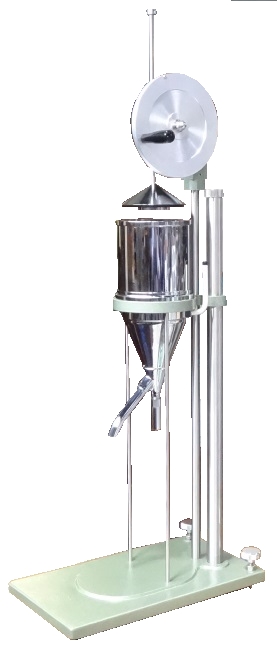The search results of the 「Pulp/Chip/Sheet former Freeness」
3in the case / showing1-3 case
Pulp/Chip/Sheet former / Freeness
- No.2580-A
- [JIS]P-8121-2012
- [TAPPI]T227om-94
- [ISO]Feb-67
Beating pulp fiber provides effects such as fibrillation, generation of fines, reduction of fiber in length and volume, etc. depending on the beating method and time. As a result, various physical characteristics of the paper are affected in addition to the fluidity and drainage performance on wire cloth. Beating has a significant role in the paper manufacturing process, and the resulting drainage performance needs to be evaluated. Some of commonly used evaluation methods involve use of a Canadian standard tester and Schopper-Riegler freeness tester. In those methods, a certain amount of suspension liquid is filtered through a screen plate or wire cloth, and the white water is sampled from the funnel side tube, whose amount is measured and used to determine the beatability. This tester uses a screen plate for filtering suspension liquid and is provided with a cock to be operated to start drainage. Thus, it eliminates differences in the result when different operators are involved, yielding high accuracy.
Pulp/Chip/Sheet former / Freeness
- No.2580-B
- [JIS]P-8121-2012
- [TAPPI]T227om-94
- [ISO]Feb-67
The very heavy drainage cylinder of the conventional tester has been a considerable burden on the operator. Unlike the conventional type, this tester is made of plastic to achieve a lesser weight. It also has handles for operating the upper and lower covers. Thus, it achieves reduction of the workload of the operator.
Referential standards: CPPA C.I, SCAN C21
Referential standards: CPPA C.I, SCAN C21
Pulp/Chip/Sheet former / Freeness
- No.2582
- [JIS]P-8121-2012
- [TAPPI]
- [ISO]Jan-67
A Schopper-Riegler freeness tester is commonly used to quickly and accurately test the beatability of pulp that is associated with the pulp performance. This tester consists of a drainage cylinder in the upper section and a measuring funnel in the bottom section. On the border of the two sections, a specified type of wire cloth is installed. Inside the drainage cylinder, a conic valve is installed, which is operated using a pulley. The measuring funnel is cone-shaped, beneath which a small drain is provided. Another drain is also provided on its side, and an air pipe is provided above the drain. Each section is fabricated precisely to the given reference dimensions. The tester is retained on a stable base provided with a leveling device.

.jpg)
